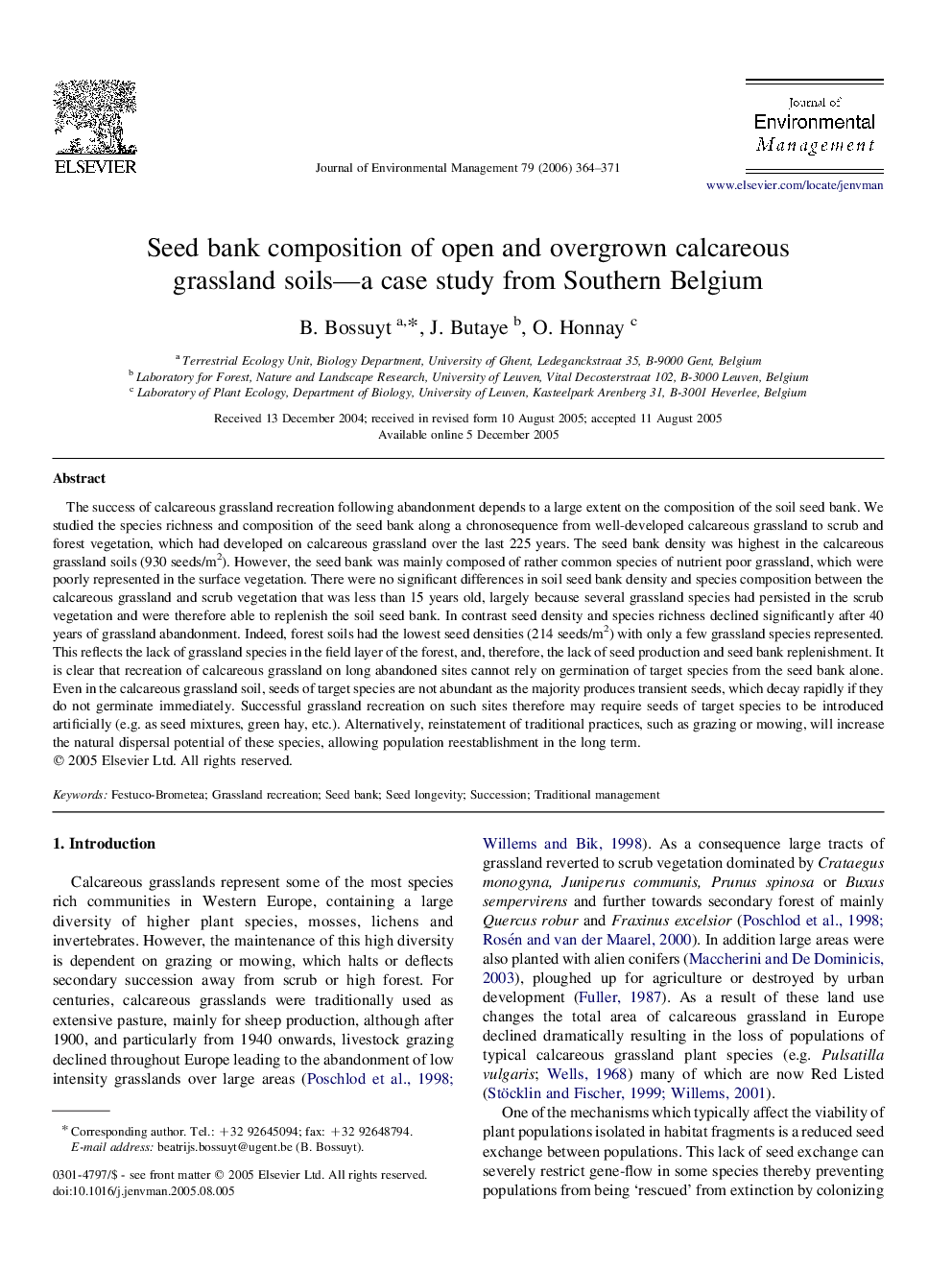| Article ID | Journal | Published Year | Pages | File Type |
|---|---|---|---|---|
| 1059015 | Journal of Environmental Management | 2006 | 8 Pages |
The success of calcareous grassland recreation following abandonment depends to a large extent on the composition of the soil seed bank. We studied the species richness and composition of the seed bank along a chronosequence from well-developed calcareous grassland to scrub and forest vegetation, which had developed on calcareous grassland over the last 225 years. The seed bank density was highest in the calcareous grassland soils (930 seeds/m2). However, the seed bank was mainly composed of rather common species of nutrient poor grassland, which were poorly represented in the surface vegetation. There were no significant differences in soil seed bank density and species composition between the calcareous grassland and scrub vegetation that was less than 15 years old, largely because several grassland species had persisted in the scrub vegetation and were therefore able to replenish the soil seed bank. In contrast seed density and species richness declined significantly after 40 years of grassland abandonment. Indeed, forest soils had the lowest seed densities (214 seeds/m2) with only a few grassland species represented. This reflects the lack of grassland species in the field layer of the forest, and, therefore, the lack of seed production and seed bank replenishment. It is clear that recreation of calcareous grassland on long abandoned sites cannot rely on germination of target species from the seed bank alone. Even in the calcareous grassland soil, seeds of target species are not abundant as the majority produces transient seeds, which decay rapidly if they do not germinate immediately. Successful grassland recreation on such sites therefore may require seeds of target species to be introduced artificially (e.g. as seed mixtures, green hay, etc.). Alternatively, reinstatement of traditional practices, such as grazing or mowing, will increase the natural dispersal potential of these species, allowing population reestablishment in the long term.
